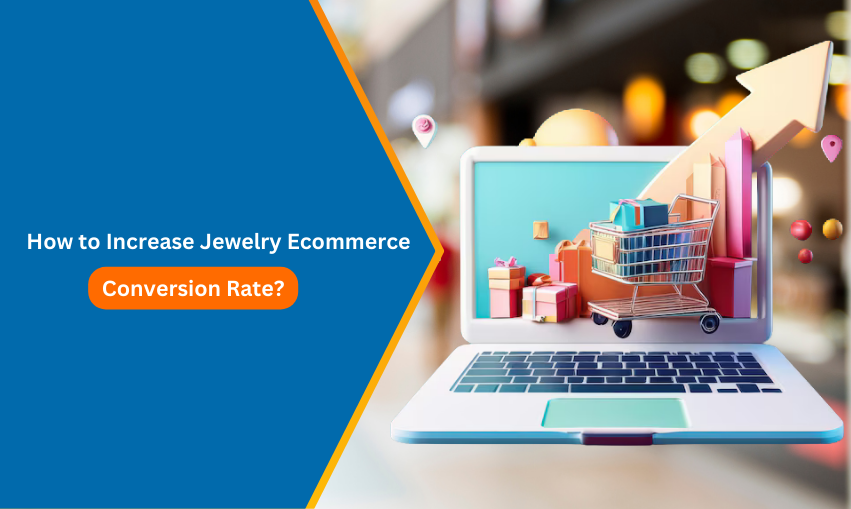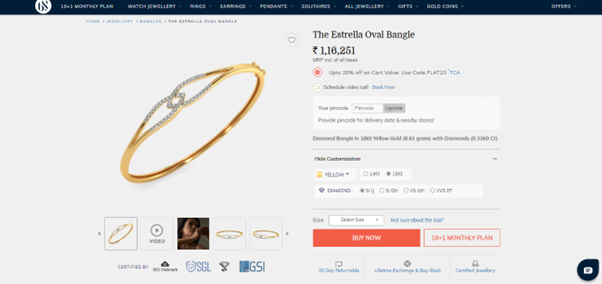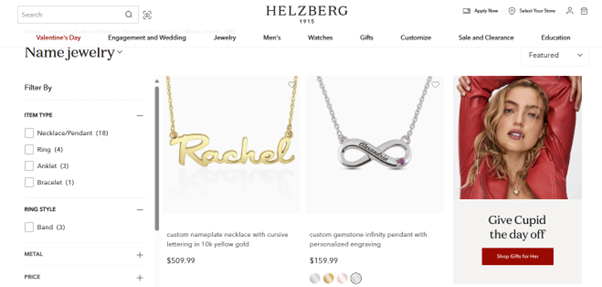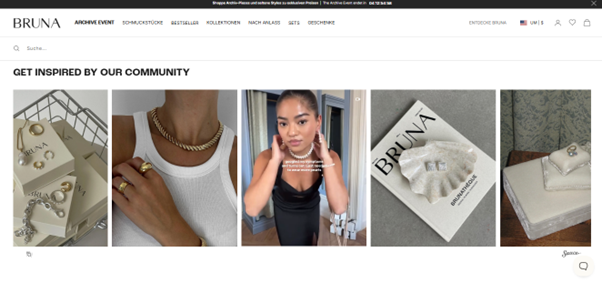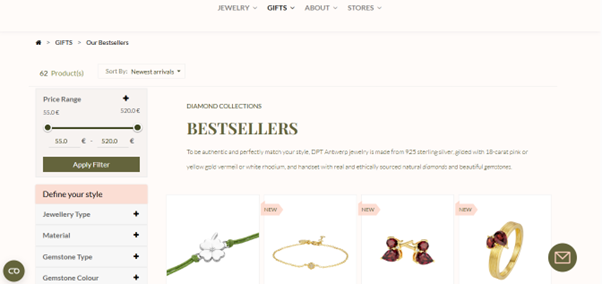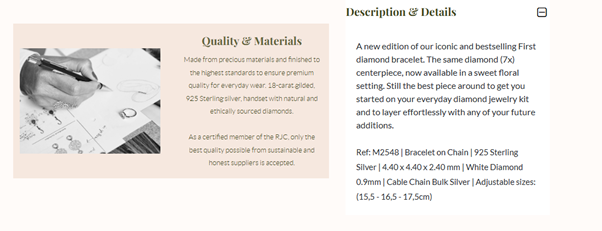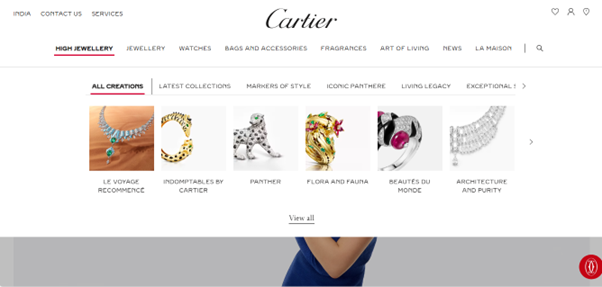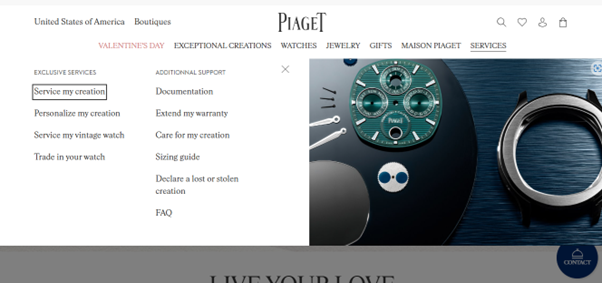The global online jewelry market is predicted to soar to $117 billion by 2027. The stakes have never been higher for jewelry brands entering the eCommerce space. While welcoming the digital revolution is essential for jewelry web design companies, simply building an online store is not enough to guarantee lasting success in such a competitive market.
To thrive, jewelry businesses must go beyond surface-level efforts and focus on key performance metrics like sales, website traffic, click-through rates, and most importantly, conversion rates. For many high-end jewelry brands, the challenge is clear that the average eCommerce buyer engagement rate often falls below 1%, meaning only one out of 100 visitors might become a customer.
But what if you could change that? What if you could turn window shoppers into loyal buyers who keep coming back? If you are ready to learn about the full potential of your jewelry business online, here are conversion rate optimization for ecommerce strategies designed to help you succeed.

See How Our Experts Can Drive More Traffic to Your Website!
SEO: Boost your rankings and drive more organic traffic today!
Website Design/Development: Create a stunning website that converts visitors into customers.
Paid Media: Reach the right audience at the right time with expertly managed paid media.
Top Methods to Increase the Conversion Rate of Jewelry E-Commerce
According to recent studies, 53% of companies allocate less than 5% of their overall marketing budget on optimizing conversions. A conversion rate of less than 1% is reported as poor and requires immediate action. Thus, it is not surprising that many businesses do not even know their buyer engagement rates. Here, we’ll be looking at actionable strategies that will help you to convert usual visits into paying customers.
1. Display Comprehensive Certifications or Specifications
When customers invest in expensive jewelry like gold necklaces or diamond rings, they need assurance that they are making a wise purchase. Providing clear and detailed specifications, such as metal type, carat weight, stone clarity, and cut helps customers feel confident in the quality of their purchase.
Even more important is the display of third-party certifications for precious items like diamonds and gemstones. Certifications verify the authenticity of the product and also establish trust and credibility, which are key to converting visitors into buyers.
Take inspiration from brands like Bluestone, an established online jewelry retailer. They excel at showcasing every detail, from metal purity and diamond grades to product authenticity certifications. These efforts build trust in product quality and lead to measurable increases in sales performance.
Authenticity cards, an important trend in jewelry eCommerce, generally include:
- Purchase Details: The exact purchase date and order confirmation.
- Product Verification: Production date and SKU number matching the purchased item.
- Warranty Information: Specific warranty terms covering manufacturing defects.
- Authenticity Assurance: A formal guarantee of the piece’s authenticity from the jeweler or designer.
- Material Transparency: Detailed verification of materials used, including metal type and stone specifications.
- Stone Origins: Clear information about the origins of stones and raw materials.
- Item Representation: A high-resolution image accurately showcasing the purchased product.
2. Explore Multiple Ways to Add Customization Options
Jewelry enthusiasts value uniqueness and are willing to pay a premium for exclusive designer pieces, rare materials, or limited-edition collections. Yet, customization holds significant appeal across all segments, be it fine jewelry or trendy accessories. Consumers see more value in personalized jewelry that reflects their individuality or special moments.
Recognizing this, brands like Helzberg propose distinctive jewelry collections with customization options that resonate deeply with their audience.
Customizing in the following ways is one of the finest strategies for an eCommerce jewelry company to sell jewelry online:
- Include pendant pairs, which can be the perfect gift for closest friends or lovers, consist of two pendants with a single message.
- Adding initials on drop earrings, rings, or pendants.
- Pendants with the names of people, places, or even pets.
- Let customers mix and match elements of a single jewelry piece, such as combining different pendants, chains, and styles for necklaces.
3. Highlight Social Proof using UGC
Customers often overlook text-based reviews, especially with the rise of tools that generate fake feedback. This growing skepticism makes it important for jewelry web design companies to incorporate user-generated content (UGC) alongside product reviews to rebuild trust.
UGC, like real people showcasing your jewelry, instantly adds authenticity to your brand. It humanizes your products, making them relatable and more desirable. Research also shows that UGC can boost conversion rates by as much as 102.4%!
Take BRUNA The Label, for example. This popular jewelry brand features a vibrant gallery of real customers wearing their pieces, displayed prominently on their website. This approach builds trust and also inspires potential buyers to imagine themselves wearing the jewelry.
4. Make Gift-Finding & Gifting Easy
According to a JewelStreet survey, 58% of women love receiving jewelry as a present. Similarly, the National Retail Federation’s 2022 survey found that 41% of respondents planned to give jewelry as a Mother’s Day present.
These jewelry eCommerce trends highlight that jewelry is both a popular and cherished gift choice.
Top Shopify Plus development agencies deliver comprehensive eCommerce solutions, including custom site optimization. If you’re looking to optimize your jewelry website for gifting, consider these actionable strategies:
- Make “Gifting” a Main Navigation Category: Add a dedicated “Gifting” section to your homepage navigation with subcategories like seasonal gifts, bestsellers, and clearance items.
- Segment Gifts by Price Range: Categorize gift options based on cost to cater to various budget preferences, helping customers quickly find options that suit them.
- Curate Style-Specific Gifting Options: Define specific styles within your gifting category to guide customers toward personalized choices.
- Highlight Last-Minute Gift Options: Include a “Ready to Ship” section under gifting categories to attract customers seeking quick solutions.
- Offer Flexible Gift Card Values: Provide a range of gift card denominations, such as $25, $50, $75, and up to $500, to appeal to a broader audience.
5. Make Sure that Size Information is Always Available
Average eCommerce returns range from 20% to 30%, with size concerns being one of the most common issues mentioned. This applies to online jewelry retailers as well because why would anyone want to buy items that don’t fit them, even if they’re labeled as free size?
Many jewelry store owners turn to skilled WooCommerce development companies in the USA for their expertise in all aspects of e-commerce, from creating custom WooCommerce themes to designing visually stunning websites. However, you can implement effective solutions on your own by following these strategies to make sizing information easily accessible on your product pages:
- Highlight Available Sizes: Display sizes as clickable buttons that change color based on the shopper’s selection. Add a popup to notify if a size is low in stock or sold out.
- Add a Sizing Guide: Provide a detailed and inclusive sizing guide that covers global size standards and multiple measurement metrics. Enrich it with sizing tips to help shoppers determine their size accurately.
- Detail Gem and Jewelry Sizes: Include precise information about gem and jewelry dimensions in the specifications section to give shoppers crystal-clear clarity before purchasing.
6. Pay attention to Photographs in your Jewellery Ecommerce Brand
Nearly 93% of customers prioritize images before making a purchase choice. Jewelry eCommerce statistics highlight the importance of stunning photography in promoting your jewelry business online.
Key sections on a jewelry website, such as the homepage, category pages, landing pages (aligned with paid ads), and the About Us page, play a crucial role in engaging high-intent visitors. To create visually compelling storefront images, focus on these strategies:
- Combine Use-Context and Product-Focused Photos: Showcase how your jewelry looks in real-life settings alongside detailed product shots.
- Enhance Photos with Retouching: Adjust color, brightness, contrast, and shadow effects to make your images visually consistent and appealing.
- Create Mood-Based Imagery: Use photographs that evoke emotions, aligning them with your brand’s aesthetic and storytelling.
- Alternate Between Models and Product-Only Shots: Include a mix of model shots and close-ups of the jewelry to provide different perspectives.
- Add Captioned Images for Complex Products: For items like stackable rings or ear studs, include captions to explain styling options or product details.
- Provide 360° Views: Use 360° photography to help customers to explore your products fully, which can boost conversions by up to 30%.
Swarovski sets a strong example by smartly integrating these elements to create a visually stunning and high-converting online storefront.
7. Focus on How Effectively You Highlight the Materials Used
Highlighting the materials in your jewelry is vital to building customer trust and increasing conversions on your eCommerce site. Customers want clarity about the components used, so make sure your product descriptions address their concerns and curiosity.
Here are actionable ways to refine your product descriptions when selling jewelry online:
- Paint a Picture with Descriptive Language: Write in a way that sparks imagination. For example, explain how the materials and gemstones enrich a shopper’s overall look, as Diamanti per Tutti does by weaving storytelling into their descriptions.
- Be Transparent and Informative: Present your brand’s unique approach to sourcing and crafting materials. Highlight what sets you apart, especially since competitors may use similar materials. Clearly convey how your processes or designs make your products distinctive.
8. Prioritize Homepage Navigation
The only way to boost your jewelry eCommerce website’s chances of increasing AOV is to concentrate more on the homepage navigation. According to Baymard’s research, half of all websites perform poorly, particularly on the homepage and in category sub-areas.
Your homepage navigation must be intuitive and easy to use, as it’s the first point of interaction for most of your audience. Clear navigation is key to better exploration and visibility for online jewelry companies. Here’s how you can achieve this.
- Include Main Categories in the Navigation Menu: Make sure your primary navigation covers all key categories and includes dropdowns or visual cues for easy exploration of subcategories.
- Arrange Top Categories Horizontally: Use a horizontal layout to prominently display your most popular categories for quick access.
- Feature Favorite Categories for Your Target Audience: Showcase customer-favorite categories in separate, visually distinct blocks to draw attention.
- Highlight Bestsellers Across All Categories: Devote a section to your top-selling products to entice customers with popular choices.
- Implement Intuitive Design for Clickable Elements: Use clear labels, hover effects, or icons to help users easily identify clickable items.
Cartier is a luxury jewelry brand and it exemplifies the above parameter by focusing on simple and user-friendly web page navigation which makes exploration seamless and inspiring.
9. Make Filtering and Sorting a Cakewalk
No matter how captivating your jewelry collections and categories may be, most customers visit your store with a specific purpose in mind. Even those browsing casually expect a seamless experience where the backend supports their navigation needs.
For example, Tiffany & Co. optimizes the shopping journey by including:
- A devoted section for popular subcategories on every category page.
- Clear and user-friendly filtering and sorting options. They allow customers to refine their choices quickly and effortlessly.
This thoughtful design makes sure that customers can easily find what they’re looking for while enjoying a smooth and satisfying shopping experience.
10. Get your Customer Service to Prioritize CLV
With 86% of buyers willing to pay more for excellent customer service, online jewelry brands are uniquely positioned to capture and retain high-value customers. Since jewelry is often a high-investment purchase, customer support should focus on enhancing a customer’s lifetime value (CLV) rather than merely resolving immediate concerns.
Here’s a strategy to boost CLV through exceptional customer service:
- Create a Seamless Multichannel Experience: Avoid sending repeated offers or messages across channels to the same customer, especially if they’ve already declined an offer.
- Train Customer Support Teams Thoroughly: Ensure your team is not only well-versed in representing your brand but also equipped to handle detailed inquiries about products and technical specifications.
- Offer More Self-Help Options: Provide FAQs within live chat, create blog posts addressing common customer questions, and make self-service tools accessible.
- Be Transparent About Assistance Timelines: Clearly communicate business hours and potential delays during peak seasons like holidays to manage expectations effectively.
- Include FAQs in Key Navigation Areas: Add FAQ links to your main menu or customer service section for easy access. For example, Piaget sets an example by integrating FAQs seamlessly into their non-transactional eCommerce pages. It ensures that customers have quick answers to their questions.
Bottom Line
Not every consumer who visits an e-commerce website is prepared to make a purchase on their first visit. Using retargeting or remarketing to re-engage visitors is just as important as optimizing the eCommerce sales funnel for conversions. Understanding your clients’ needs at every stage of their journey and providing them with a smooth experience is the key.
A well-designed store with a seamless user experience can significantly boost your performance and sales. Shopify jewelry stores are structured to include all the essential sections, from product pages to checkout and customer service, ensuring every touchpoint is optimized for conversions.
You can also create an engaging shopping experience that encourages customers to explore and complete their purchases by focusing on a design that is both user-friendly and sales-driven.

